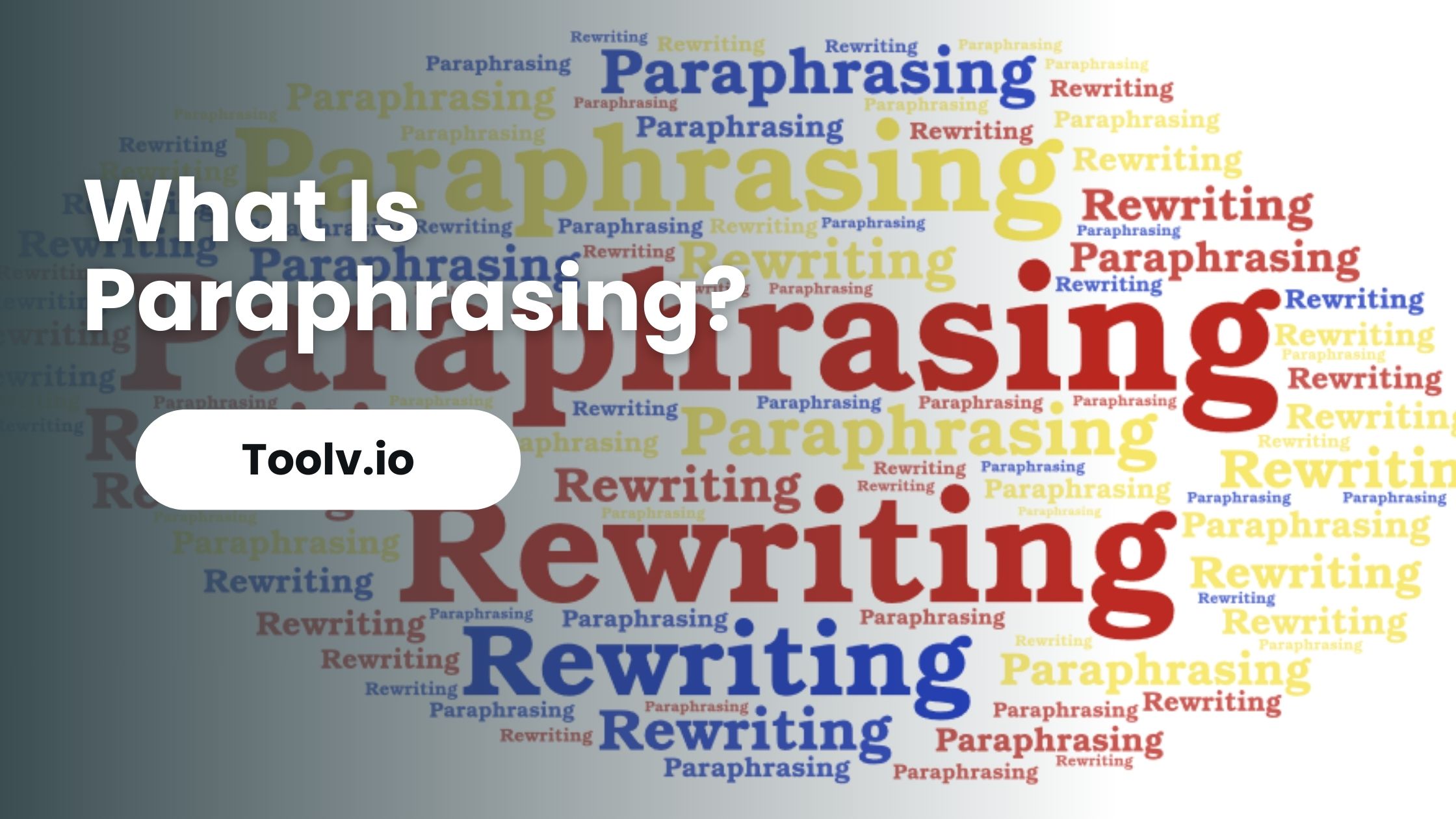What Is Cite Paraphrasing?

Paraphrasing means taking someone else’s ideas and putting them in your own words. It’s different from quoting directly because you rewrite the original text in a new way.
In this article, we will discuss the right way to cite paraphrasing. We’ll look at different citation styles and how to ensure you’re giving proper credit. This way, your work stays honest and respects other writers’ hard work.
What Is Cite Paraphrasing?
Cite paraphrasing is when you change the words of someone else’s work but keep the meaning. It’s like rewriting a story in your own words while still giving credit to the original author.
You do this to make the information fit better in your work, but you must always say where you got the ideas from. When you paraphrase, you don’t copy exactly. Instead, you use different words and a simpler style.
It’s important to do this right. If you don’t give proper credit, it can be seen as stealing someone else’s ideas. Paraphrasing helps make information clearer or more suitable for your readers.
How do you cite paraphrase?
Cite paraphrasing means you tell where you got ideas from another person but in your own words. It’s different from quoting because you use a different word than the exact words. You still need to tell where you got the ideas.
This shows you respect the original person’s work. It’s important in writing, to be honest about where ideas come from. To do this, after you write the idea in your own words, you add a note about where it came from.
This note can be at the end or in the text. It usually has the author’s name and where the work was published. This helps readers find the original work if they want. It’s a good way to use others’ ideas while being fair and honest.
What is APA in Cite Paraphrasing?
APA in cite paraphrasing refers to the method of rewording someone else’s ideas or information using your own words while following the American Psychological Association’s (APA) citation style.
When you paraphrase, you must still give credit to the source to avoid plagiarism. This involves mentioning the author’s name and the publication year within your text. The APA style is widely used in social sciences for academic writing.
Paraphrasing allows you to integrate research into your work without directly quoting, making your writing flow better. It’s important to understand the source material fully to ensure an accurate representation of the original idea.
How do you cite a paraphrased list in APA?
To cite a paraphrased list in APA format, you don’t need to quote directly. Instead, rewrite the list in your own words. Mention the author’s last name and the year of publication in brackets after your paraphrase.
For example, if you paraphrase a list from a book by Smith published in 2020, write your version of the list and then add (Smith, 2020) at the end. This shows where the ideas came from without copying the exact words.
Remember, APA is about giving credit to authors for their ideas in a clear way. Keep your paraphrasing accurate to the original meaning.
How do you cite paraphrasing in APA 7?
In APA 7, when you rephrase someone else’s ideas in your own words, it’s called paraphrasing. You don’t copy their words exactly, but you still need to give them credit. Start with the author’s last name and the year of their work.
This can be inside your sentence or at the end in brackets. For example, if Smith wrote a book in 2020, you can write, “Smith (2020) suggests…” or “…as seen in recent studies (Smith, 2020).”
You don’t need the page number for paraphrasing, just for direct quotes. Remember, it’s important to always give credit to the original author, even when you put it in your own words.

How do you cite a paraphrase with multiple authors in APA?
In APA 7, when you rephrase someone else’s ideas in your own words, it’s called paraphrasing. You don’t copy their words exactly, but you still need to give them credit.
Start with the author’s last name and the year of their work. This can be inside your sentence or at the end in brackets. For example, if Smith wrote a book in 2020, you can write, “Smith (2020) suggests…” or “…as seen in recent studies (Smith, 2020).”
You don’t need the page number for paraphrasing, just for direct quotes. Remember, it’s important to always give credit to the original author, even when you put it in your own words.
FAQs
What is paraphrasing and how is it different from quoting?
Paraphrasing involves restating someone else’s ideas or information in your own words, while quoting involves directly copying a section of text with an exact word-for-word reproduction.
How do I cite a paraphrase in my paper?
To cite a paraphrase, you need to include an in-text citation next to the paraphrased text that refers to the original source. This can vary depending on the citation style you are using (like APA, MLA, or Chicago).
Do I need to cite the source if I paraphrase?
Yes, you must cite the source when you paraphrase. Even though the words are yours, the ideas or information come from someone else’s work. Failing to cite a paraphrase is considered plagiarism, as it misrepresents someone else’s ideas as your own.
Conclusion
Paraphrasing is a useful technique for rewording text while preserving its original meaning. It allows for clearer understanding and avoids plagiarism. Tools like Toolv.io make this process efficient and accurate.
By using such tools, one can ensure the integrity and uniqueness of their work, simplifying complex ideas into easily digestible content. This approach benefits both the writer and the reader, promoting effective communication.
For more information about how to convert text to speech, click our how to convert text to speech post. For free text to speech tools click on our free text to speech tool post.





